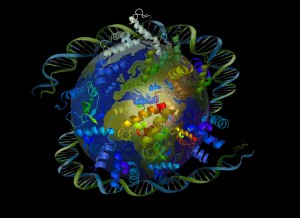 Scientific understanding of endocrine disruption is advancing rapidly. New mechanisms of endocrine disruption, new targets for EDC action and new ways to measure the effects of EDCs, are being reported regularly. Any effective testing protocol must evolve as new scientific discoveries are reported. The guiding principles behind this testing protocol, however, remain constant.
Scientific understanding of endocrine disruption is advancing rapidly. New mechanisms of endocrine disruption, new targets for EDC action and new ways to measure the effects of EDCs, are being reported regularly. Any effective testing protocol must evolve as new scientific discoveries are reported. The guiding principles behind this testing protocol, however, remain constant.
TiPED™ Guiding Principles:
- Chemical hazard must be considered at all stages of molecular design and synthesis. Green chemists design against hazard 13.The earlier in the design process that hazard can be discovered, the more likely it is that downstream problems will be minimized, if not avoided entirely. This can have material benefits for the chemist and his/her company.
- Assays used should reflect current scientific understanding, and the protocol should be reviewed regularly to incorporate new scientific discoveries and tools. The standardized assays upon which traditional toxicological approaches are based are often decades old. They rarely reflect the quality and modernity of assay tools used in scientific research funded by the National Institutes of Health, including the National Institute of Environmental Health Sciences. The old approaches are insensitive and largely incapable of dealing with EDCs. Ignoring current science would lock chemists into yet another generation of hazardous materials.
- The assays within each tier should span a comprehensive range of EDC mechanisms of action. Because single chemicals can act through multiple mechanisms, there is a need to look for more than one or two EDC modes of action. The absence of action through one mechanism cannot be taken as evidence of no action through another mechanism.
- While in silico and in vitro assays offer less costly starting points, in vivo assays are necessary to conclude that a chemical is unlikely to have EDC activity. The current state of in silico and in vitro assays do not sufficiently incorporate the complexity of an endocrine system functioning in a living organism, and especially that of a developing organism.
Read more about the thinking behind the guiding principles here.
In all likelihood, the chemist him/herself will not be performing the assays, but instead will be working in partnership with environmental health scientists or with a contract laboratory. Because this is not the chemist’s field, yet their research is dependent upon the test findings, it is important for the chemist to have some ability to gauge the quality and reliability of the work being done. This is especially the case for EDCs because of the complexity of the science. Thus we present:
Principles for the selection and evaluation of EDC assays:
- Each assay should be reliable, relevant, meet performance standards and use well-defined endpoints. Select assays that have proven reliable among different laboratories, have well defined performance standards and avoid assays that test for poorly defined endpoints and hence are open to arbitrary and variable interpretation.
- Experimental design should employ concurrent negative and positive controls and blanks to confirm that the experimental system is free from contamination and that it is appropriately sensitive. Negative controls are essential to establish an effect. Positive controls are needed to demonstrate that the experimental system is appropriately sensitive and free of contamination or other confounding variables. The positive control must be used at an appropriate dose to determine whether the assay is capable of detecting effects of low doses of EDCs. Prior use of insensitive strains of rodents in EDC tests without positive controls has led to significant confusion in the peer-reviewed literature. Controls must be run concurrently because of the potential for temporal variation in unintended contamination (e.g., changes in composition of rodent chow from batch to batch).
- A dynamic testing range should be established, and testing should be carried out over the full range, including high and low doses. This principle acknowledges a fundamental feature of endocrine disruption, that high dose effects do not necessarily predict low dose effects, i.e., non-monotonicity in the dose-response curve.
- Some in vivo tests should be structured to reveal the consequences of developmental exposures on health and function later in life, through all life stages. Developmental exposures can lead to effects that are initially subtle, for example changes in epigenetic programming, but ultimately highly adverse, e.g., cancer in adulthood.
- Some in vivo tests should not assume knowledge of the mechanism/pathway of action. This principle is designed to widen the reach of the assays beyond currently known mechanisms of endocrine disruption. We have identified several in vivo “medium-throughput” assays that do not assume the mechanism of EDC action but instead look broadly at developmental disorders following early life exposure in fish and amphibians.
As with the choice and evaluation of specific assays, assessment of laboratory practice in experimental environmental health science is outside the expertise of most chemists. Six important issues should be addressed explicitly in the choice of collaborators/contract laboratories. Thus:
Principles for Evaluating Laboratories:
- Each assay should be reliable, relevant, meet performance standards and use well-defined endpoints. The laboratory must demonstrate it can replicate the use of the assay(s) as carried out by other laboratories and that it is capable of repeatedly performing the assay successfully.
- Demonstrate transparency in reporting. The laboratory must be willing to share all relevant information about the laboratory and its methods and practices, as well as all relevant data on assay performance.
- Utilize effective, safe husbandry practices; high mortality/morbidity rates in controls are unacceptable. This criterion focuses on animal husbandry practices by the laboratory. Poor animal husbandry is not only unethical, it introduces additional variability in the experiments that can mask effects, making it more difficult to confirm or reject EDC activity. The laboratory should share information about its husbandry practices and benchmark those against industry standards.
- Employ power analysis of preliminary results to design methods. Power analyses should be performed in preparation for the full assay. Power analysis is a statistical tool that provides guidance, based on preliminary data, on the sample size necessary to find a statistically significant result given the magnitude of the effect and the variance inherent in the data. Use of power analysis is especially important in in vivo studies to ensure the sample size is large enough to detect an effect but not so large that an excessive number of animals are used.
- Utilize standard protocols and solutions/reagents/cultures/etc., where they are available. Standard protocols, well established in the peer-reviewed literature, should be followed in carrying out the assays and variations in assay performance must be avoided. Use of standard solutions/reagents/cultures/etc., will help avoid inadvertent contamination and unexpected biological variability.
- Undergo external review and audit on regular basis comparable to NSF/NIH external reviews. External review and audit will provide the chemist overall assurance of the laboratory’s quality.
